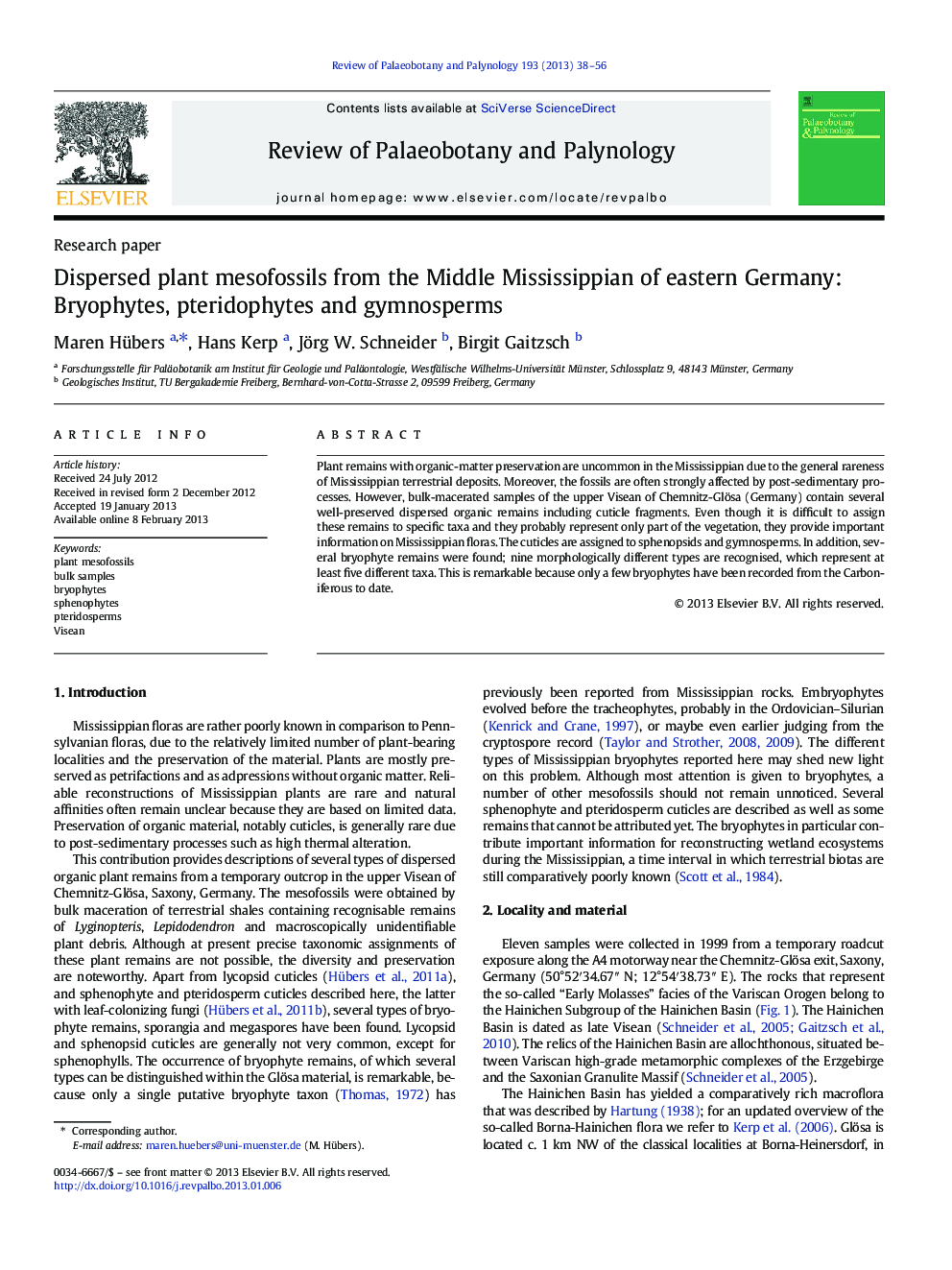| Article ID | Journal | Published Year | Pages | File Type |
|---|---|---|---|---|
| 4750454 | Review of Palaeobotany and Palynology | 2013 | 19 Pages |
Plant remains with organic-matter preservation are uncommon in the Mississippian due to the general rareness of Mississippian terrestrial deposits. Moreover, the fossils are often strongly affected by post-sedimentary processes. However, bulk-macerated samples of the upper Visean of Chemnitz-Glösa (Germany) contain several well-preserved dispersed organic remains including cuticle fragments. Even though it is difficult to assign these remains to specific taxa and they probably represent only part of the vegetation, they provide important information on Mississippian floras. The cuticles are assigned to sphenopsids and gymnosperms. In addition, several bryophyte remains were found; nine morphologically different types are recognised, which represent at least five different taxa. This is remarkable because only a few bryophytes have been recorded from the Carboniferous to date.
► We describe bulk-macerated plant mesofossils from the Mississippian of Germany. ► The remains comprise bryophytes, pteridophytes and gymnosperms. ► The bryophytes include the oldest known mosses. ► Some of the moss remains belong to Sphagnales and Protosphagnales. ► An application of bulk maceration for other Carboniferous floras is recommended.
